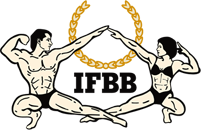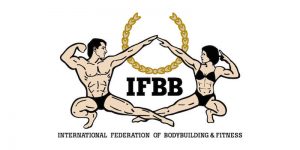SANCTIONS
SANCTIONS FOR ANTI-DOPING RULE VIOLATIONS (ADRVs)
Sanctions are referred to as consequences in Article 10 of the World Anti-Doping Code and are imposed once an anti-doping rule violation has been established.
The consequences of an anti-doping rule violation may include the disqualification of results, the imposition of a period of ineligibility, mandatory publication of your violation and, perhaps, financial sanctions.
PERIOD OF INELIGIBILITY
Ineligibility means that the athlete cannot take part in any competition or the activities of an International Federation, its member national federations or their member clubs.
Similarly, the athlete cannot take part in any competitions authorized or organized by any of the other signatories of the Code or their affiliated entities.
The period of ineligibility may range from a reprimand to a life-time ban. For Anti-Doping Rule Violations of presence or use of a prohibited substance, this period is generally as follows:
- If you intended to cheat, the period is 4 years;
- Otherwise, it is 2 years – unless you can show that you had no significant fault no negligence, in which case ineligibility may be reduced to a minimum of one year;
- If the violation involves a specified substance or a contaminated product, and you can establish “No Significant Fault”, ineligibility may range from 2 years to a reprimand, depending on your level of fault.
IMPORTANT NOTICE: BE AWARE OF THE STRICT LIABILITY PRINCIPLE
WHAT IS STRICT LIABILITY?
The principle of strict liability is applied in situations where urine/blood samples collected from an athlete have produced adverse analytical results.
It means that each athlete is strictly liable for the substances found in his or her bodily specimen, and that an anti-doping rule violation occurs whenever a prohibited substance (or its metabolites or markers) is found in bodily specimen, whether or not the athlete intentionally or unintentionally used a prohibited substance or was negligent or otherwise at fault.
The strict liability principle means the athlete is responsible for any prohibited substance which is found in their sample and regardless of whether the athlete intentionally, carelessly or recklessly consumed that substance.
IS THERE ANY FLEXIBILITY TO TAKE INTO CONSIDERATION THE CIRCUMSTANCES OR INTENTION OF THE ATHLETE?
Yes, there is flexibility when a sanction is being considered.
The rule is the starting point so that, while an anti-doping rule violation occurs regardless of the athlete’s intention, there is flexibility in the sanctioning process to consider the circumstances.
HOW IS THE PRINCIPLE PUT INTO PRACTICE?
If the sample came from an in-competition test, then the results of the athlete for that competition are automatically invalidated. This rule helps to establish fairness for the other athletes in the competition.
As relates to subsequent sanctions (Art. 10 of the Code), the athlete has the possibility to avoid or reduce sanctions if he or she can establish to the satisfaction of the tribunal how the substance entered his or her system, demonstrate that he or she was not at fault or significant fault or in certain circumstances did not intend to enhance his or her sport performance. This means that the burden of proof is on the athlete.
The strict liability principle set forth in the Code has been consistently upheld in the decisions of the Court of Arbitration for Sport (CAS) and the Swiss Federal Court.
In case there are multiple Anti-Doping Violations or aggravated circumstances, the period of ineligibility may be more than 4 years up to a maximum of a life-time ban.
WHAT RANGE OF FACTORS DOES THE PERIOD OF INELIGIBILITY DEPEND UPON?
The factors include the type of violation, the prohibited substance or method used, the nature of the athlete’s conduct and the athlete’s degree of fault.
MANDATORY PUBLIC DISCLOSURE
If you are found to have committed an anti-doping rule violation, that fact will be made public. An Anti-Doping Organization will publish the name of the athlete, the nature of the rule’s violation and the consequences within 20 days after a final ruling. If the final decision was that there was no violation, the decision may only be disclosed publicly with the consent of the athlete.
According to WADA Anti-Doping Code and related Standards and Guidelines IFBB publishes all necessary information about ADRV committed:
- Full decision
- Sport
- The Anti-Doping Rule violated
- The name of the Athlete or other Person who committed ADRV
- The Prohibited Substance or Prohibited Method involved
- The Consequences (sanctions) imposed
It may be an Anti-Doping Rule Violation (ADRV) to work with Athlete Support Personnel who has been sanctioned by the IFBB, as well as any coaches, trainers, physicians or other Athlete Support Personnel who are ineligible on account of an ADRV or who have been criminally convicted or professionally disciplined in relation to doping (see WADA’s Prohibited Association List).
For more information about the sanctions, please consult:
LIST OF SUSPENDED ATHLETES AND TESTING FIGURES
IFBB issues and updates regularly one list of athletes who are suspended due to Anti-Doping Rules Violations (ADRVs) at National or International Level. IT also publishes a list of suspended athletes on tests performed on championships where IFBB was the Testing Authority. These two lists can be seen by clicking on the links bellow:




